-202403121604.gif)

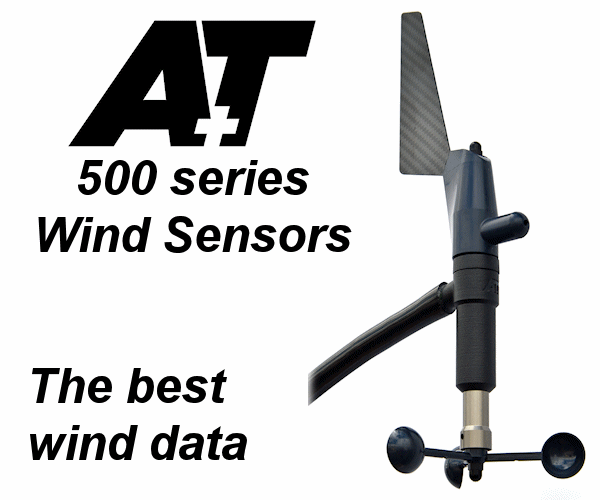



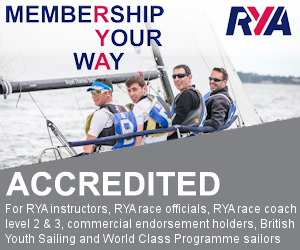




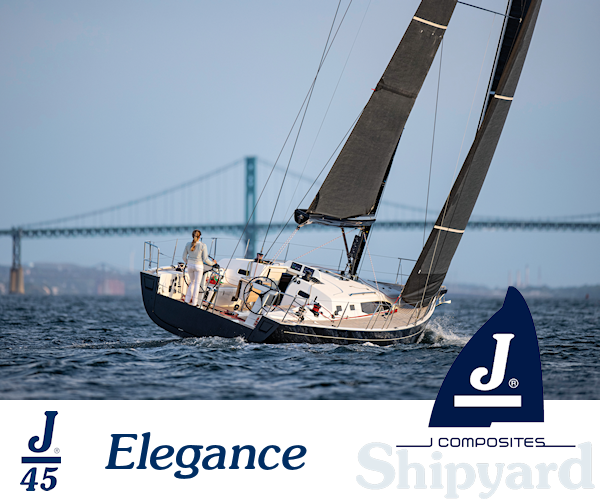
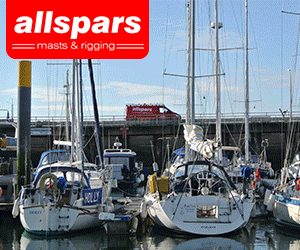
Boats for sale
| Laurent Giles 'Jolly Boat' Exeter |
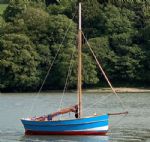 |
| Laser XD 203301 Upminster |
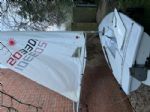 |
| J24 (Sail No. 4239) Dartmouth |
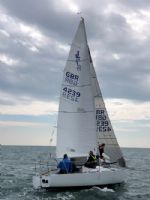 |
List classes of boat for sale |
Downwind sailing in a 'slow asymmetric' |
Post Reply 
|
Page 123> |
| Author | |
Wetabix 
Posting king 
Joined: 15 Feb 10 Location: United Kingdom Online Status: Offline Posts: 103 |
 Post Options Post Options
 Quote Quote  Reply Reply
 Topic: Downwind sailing in a 'slow asymmetric' Topic: Downwind sailing in a 'slow asymmetric'Posted: 30 Oct 17 at 1:02pm |
|
Does anyone know of a good book or article on downwind sailing in a slow asymmetric? I am particularly interested in the tactical nuances when sailing in a mixed fleet which contains boats such as the Phantom and K1 which run almost DDW. I have to take the asymmetric line and thus sail much greater distances . No problem when planing but in sub planing conditions I find that most 14 to 15 foot boats go pretty much the same speed downwind which makes a nonsense of the 100 point handicap difference
|
|
 |
|
Gordon 1430 
Far too distracted from work 
Joined: 27 Jun 17 Location: Lee on Solent Online Status: Offline Posts: 310 |
 Post Options Post Options
 Quote Quote  Reply Reply
 Posted: 30 Oct 17 at 1:16pm Posted: 30 Oct 17 at 1:16pm |
|
Does your name give a hint as to what you sail? I would imagine the Weta would struggle for number of races to get a sensible PY. I race a lot against 400 on a mixture of courses and they win more than I do. We are racing in tidal conditions so the extra grunt of the 400may help against the tide.
|
|
|
Gordon
Phantom 1430 |
|
 |
|
H2 
Really should get out more 

Joined: 26 Jul 17 Online Status: Offline Posts: 749 |
 Post Options Post Options
 Quote Quote  Reply Reply
 Posted: 30 Oct 17 at 1:53pm Posted: 30 Oct 17 at 1:53pm |
|
If you sail on a pond then my experience is to sell the assym and get a singlehander if you want to be competitive!
|
|
 |
|
Wetabix 
Posting king 
Joined: 15 Feb 10 Location: United Kingdom Online Status: Offline Posts: 103 |
 Post Options Post Options
 Quote Quote  Reply Reply
 Posted: 30 Oct 17 at 4:25pm Posted: 30 Oct 17 at 4:25pm |
|
Actually I had a single hander (a Phantom) but when I gybed it kept turning over and as I passed the age of 70 my enthusiasm for breathing Scottish water faded, so I bought what I thought was a Phantom with trainer wheels (a Weta). It does not turn upside down when it gybes and it can on occasion beat a 400 and even occasionally a Phantom , but it is work on a windward/leeward and no faster than a Laser Radial downwind. The K1 is particularly hard to beat. Sure, in 15 knots you are up there with the big boys and if the course is a wide triangle you may even win occasionally.I learned my dinghy racing at the age of 55 during the asymmetric revolution and it was only when I read Higher Performance Sailing that I realised that it was a con. Frank Bethwaite states categorically that nothing slower than a 29er will work. To compound the misery I don't even have a boom so DDW is not an option. The Dart 15 doesn't have a boom either, so how do they treat the off wind legs? What does surprise me is the 90 degree gybing angle used by the 470 which could go DDW if it wanted to but doesn't. So: to repeat my question, could anyone recommend a good book?
|
|
 |
|
pondlife1736 
Posting king 
Joined: 17 Jan 14 Online Status: Offline Posts: 106 |
 Post Options Post Options
 Quote Quote  Reply Reply
 Posted: 30 Oct 17 at 7:52pm Posted: 30 Oct 17 at 7:52pm |
|
Dart 15 doesn't have a kite of course, so will more or less go DDW to the mark, especially if it's light wind. Yes it's slow and can be frustrating in a handicap fleet. With the jib up you would head up a little to keep it full, but my experience is that max downwind speed is a long way from VMG even in a good breeze. Not sure why the lack of boom would be a factor.
|
|
 |
|
JimC 
Really should get out more 

Joined: 17 May 04 Location: United Kingdom Online Status: Offline Posts: 6649 |
 Post Options Post Options
 Quote Quote  Reply Reply
 Posted: 30 Oct 17 at 8:33pm Posted: 30 Oct 17 at 8:33pm |
|
Thing is the principle is much the same in any boat. Sail the apparent wind angle that gets you the best VMG, sail in the best wind and sail the shifts so you do the shortest course. The difficult part is knowing what the best apparent angle is in each wind strength, and that's boat specific so a book is unlikely to help.
In an ideal world you'd have a complete set of instrumentation as they have on bigger boats where you could record wind speed and direction and speed through the water and construct a polar. For most of us that isn't an option. I'd be tempted to work out a way I could have a series of graduated apparent wind angles marked, and then use a mobile phone with GPS log to do a series of runs maintaining as far as possible a constant apparent wind angle (with reasonable number of gybes to get true wind) and see if I could inform my thinking that way. |
|
 |
|
craiggo 
Really should get out more 

Joined: 01 Apr 04 Location: United Kingdom Online Status: Offline Posts: 1810 |
 Post Options Post Options
 Quote Quote  Reply Reply
 Posted: 30 Oct 17 at 8:36pm Posted: 30 Oct 17 at 8:36pm |
|
DDW on Dart15s and 18s is all about pushing the main out as far as it will go. We used to stand up, grab the clew and push it right out past the shroud, then helm and crew lying on the front beam. It's all about reducing drag in conditions where you aren't at max hull speed. Lift the sterns up until the length of boat left immersed matches the speed you are doing.
On a Weta you could try the same with the main, and goosewing the spinnaker, also try and keep the two floats out of the water, unless it's breezy in which case get the kite flying and sitting up to windward try and keep the pressure up, bear away in the gusts and try and keep the windward float out of the water at all times. Edited by craiggo - 30 Oct 17 at 8:40pm |
|
|
OK 2129
RS200 411 |
|
 |
|
Sam.Spoons 
Really should get out more 
Joined: 07 Mar 12 Location: Manchester UK Online Status: Offline Posts: 3398 |
 Post Options Post Options
 Quote Quote  Reply Reply
 Posted: 30 Oct 17 at 9:34pm Posted: 30 Oct 17 at 9:34pm |
|
Apparent wind boats (i.e. cats, tri's and skiffs) are always at a disadvantage in the light stuff when they can't get the apparent wind working. But when they can (and on a suitable course) they should have a corresponding advantage against slow boats so it's swings and roundabouts. Racing handicap means you can pick a boat that excels in the prevailing conditions at your club or pick a boat you love sailing or, if you're lucky, pick one boat that does both (I sail two boats I love sailing and one that suits the club conditions..... though that one may not last).
I spent many years racing Raceboards (and DIV 1 before that) and if any craft demonstrates the difference between DDW and apparent wind the Raceboard 7.5 does. up to a certain point DDW is way faster (bear in mind unlimited pumping is allowed) then, as soon as you are planing then sailing the angles pays off in spades.
|
|
|
Spice 346 "Flat Broke"
Blaze 671 "supersonic soap dish" |
|
 |
|
Guests 
Guest Group 
|
 Post Options Post Options
 Quote Quote  Reply Reply
 Posted: 31 Oct 17 at 11:32am Posted: 31 Oct 17 at 11:32am |
|
The problem here is the weakness or problem isn't yours, it's the boats. As a result, there isn't much you can do in changing your strategy or tactics to alter that; no amount of self improvement will make that go away.
What might be most useful is some class racing so you can see where your strengths and weaknesses really lay, and try and work on them. As long as you are generally getting faster around the course you should also generally do better on handicap (although you will still find your craft is comparatively weak on a dean run).
Edited by mozzy - 31 Oct 17 at 11:57am |
|
 |
|
Guests 
Guest Group 
|
 Post Options Post Options
 Quote Quote  Reply Reply
 Posted: 31 Oct 17 at 11:56am Posted: 31 Oct 17 at 11:56am |
|
So whilst it may not overcome loosing out to DDW boat, in terms of strategy and technique in a slow asymmetric, I'd offer this advice (for what it's worth), it might all be bread and butter to you;
Below planing conditions wind shifts will be more important than pressure (like upwind). Fit a compass to your boat and just like you would on a beat gybe on the shifts (except do it on lifts). To start off, gybe on every 5 degree lift, then reduce this as you get a feel for how long the shift will last and how much ground you lose through the manoeuvre. It's better to gybe too often to start of with, as it's far easier to tell when a gybe hasn't worked, then when it might have. It's also good for your boat handling, and ultimately, the better the gybes, the more shifts you can take advantage of. Try an get a feel for what are favourable numbers on each gybe, just as you would on each tack upwind. Do this before the race and remember them from each downwind. Even write them down if needed. This will help you get in to sync with the shifts quicker. Another trick is to note whether you are rounding the windward mark on a lift or header. If it's a lift, gybe set, if its a header, straight set. Take transit on two objects as soon as you've set your kite around the windward. Then next lap you can compare your first heading. As breeze increases pressure becomes more important. For boats with a distinct 'speed hump' around the planing speed then pressure becomes critical to almost all else. Any day that presents these conditions just forget your racing results and spend it playing around transitioning between modes. Having a feel for this is difficult. The best way I can think of describing it is when the pressure increases and you can feel the boat sticking against it's wake. At this point a small heat up in angle, ootch with the shoulders and flick of the sheet should be enough to promote planing. As the boat lifts keep sheeting in for the new apparent. Look back at your trail through the water to gauge how large a change in angle was required to get up and going. If really successful your trail should 'S' as you head up, start to plane, then bear away with the headed apparent to a course not much higher than the original. Once planning, speed increases are more linear with increased pressure. Speed increases also give your apparent wind a header to, so it's a double win. Shifts are still important, but less than pressure. It may be worth sailing a lift, if it takes you toward a band of pressure. Sometimes it's also worth sailing above your best VMG course to get over to band of pressure quicker than a pack of boats around you. Once up and planning you want to be constantly looking around a how the patches of pressure are tracking and trying to link up a pattern of gusts. Being subject to both pressure and shifts, downwind laylines are a very fickle place to be. In light airs if you gybe too early you will struggle to get low enough, but the penalty for this is only another gybe, which you can take at a time that suits. In light airs if you gybe too late, you have to sail high. It won't be the best VMG, but not a disaster. Once it gets windy the lay-lines are much tougher as you gybe too late; in the worst situation you will have to drop the kite and make big losses. As for technique on how to to set the boat up; i don't know what you're sailing and these thing are often hugely class specific. But for me these have helped: Pay attention to tack length and head drop. Sometimes in light wind it can be good to give a few inches of separation from pole and mast to allow the kite it's own wind. Having a set of light wind, light weight sheets is very useful too. If you have a downhaul line on the kite, make sure this is light weight too (stripped back to core for tail end) so it's not collapsing the kite. Usually a little windward heal balances the rudder and encourages the kite to roll around to windward too. Hopefully some of that helps.
 Edited by mozzy - 31 Oct 17 at 12:36pm |
|
 |
|
Post Reply 
|
Page 123> |
| Forum Jump | Forum Permissions  You cannot post new topics in this forum You cannot reply to topics in this forum You cannot delete your posts in this forum You cannot edit your posts in this forum You cannot create polls in this forum You cannot vote in polls in this forum |
Bulletin Board Software by Web Wiz Forums® version 9.665y
Copyright ©2001-2010 Web Wiz
Change your personal settings, or read our privacy policy
Copyright ©2001-2010 Web Wiz
Change your personal settings, or read our privacy policy











 Printable Version
Printable Version Delicious
Delicious Digg
Digg Facebook
Facebook Furl
Furl Google
Google MySpace
MySpace Newsvine
Newsvine reddit
reddit StumbleUpon
StumbleUpon Twitter
Twitter Windows Live
Windows Live Yahoo Bookmarks
Yahoo Bookmarks Topic Options
Topic Options